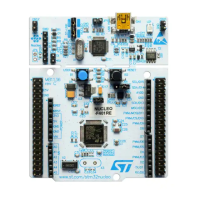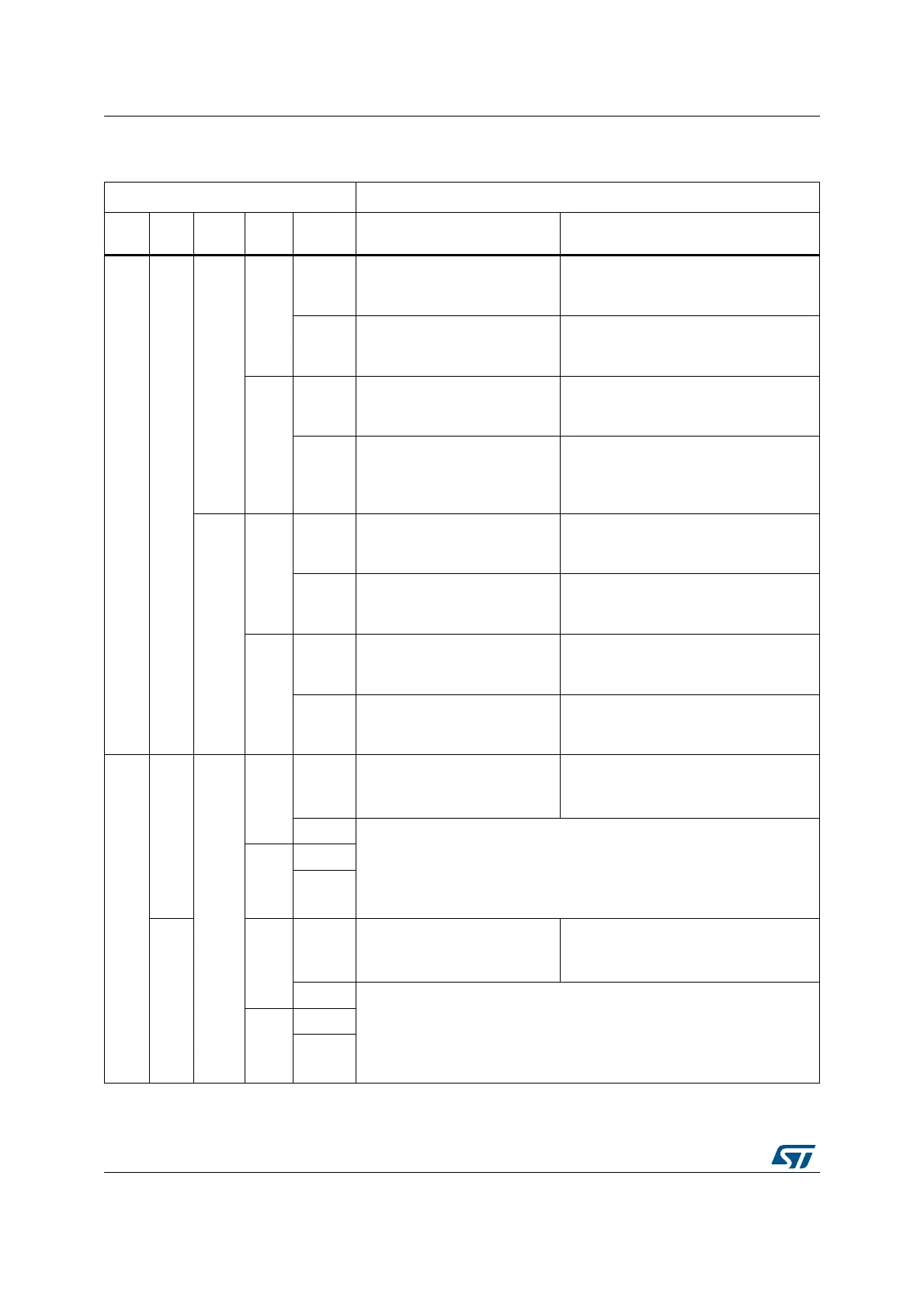Advanced-control timers (TIM1) RM0401
330/771 RM0401 Rev 3
Table 59. Output control bits for complementary OCx and OCxN channels
with break feature
Control bits
Output states
(1)
MOE
bit
OSSI
bit
OSSR
bit
CCxE
bit
CCxNE
bit
OCx output state OCxN output state
1X
0
0
0
Output Disabled (not driven by
the timer)
OCx=0, OCx_EN=0
Output Disabled (not driven by the timer)
OCxN=0, OCxN_EN=0
1
Output Disabled (not driven by
the timer)
OCx=0, OCx_EN=0
OCxREF + Polarity OCxN=OCxREF xor
CCxNP, OCxN_EN=1
1
0
OCxREF + Polarity
OCx=OCxREF xor CCxP,
OCx_EN=1
Output Disabled (not driven by the timer)
OCxN=0, OCxN_EN=0
1
OCREF + Polarity + dead-time
OCx_EN=1
Complementary to OCREF (not
OCREF)
+ Polarity + dead-time
OCxN_EN=1
1
0
0
Output Disabled (not driven by
the timer)
OCx=CCxP, OCx_EN=0
Output Disabled (not driven by the timer)
OCxN=CCxNP, OCxN_EN=0
1
Off-State (output enabled with
inactive state)
OCx=CCxP, OCx_EN=1
OCxREF + Polarity
OCxN=OCxREF xor CCxNP,
OCxN_EN=1
1
0
OCxREF + Polarity
OCx=OCxREF xor CCxP,
OCx_EN=1
Off-State (output enabled with inactive
state)
OCxN=CCxNP, OCxN_EN=1
1
OCREF + Polarity + dead-time
OCx_EN=1
Complementary to OCREF (not
OCREF) + Polarity + dead-time
OCxN_EN=1
0
0
X
0
0
Output Disabled (not driven by
the timer)
OCx=CCxP, OCx_EN=0
Output Disabled (not driven by the timer)
OCxN=CCxNP, OCxN_EN=0
1 Output Disabled (not driven by the timer)
Asynchronously: OCx=CCxP, OCx_EN=0, OCxN=CCxNP, OCxN_EN=0
Then if the clock is present: OCx=OISx and OCxN=OISxN after a dead-
time, assuming that OISx and OISxN do not correspond to OCX and
OCxN both in active state.
1
0
1
1
0
0
Output Disabled (not driven by
the timer)
OCx=CCxP, OCx_EN=0
Output Disabled (not driven by the timer)
OCxN=CCxNP, OCxN_EN=0
1 Off-State (output enabled with inactive state)
Asynchronously: OCx=CCxP, OCx_EN=1, OCxN=CCxNP, OCxN_EN=1
Then if the clock is present: OCx=OISx and OCxN=OISxN after a dead-
time, assuming that OISx and OISxN do not correspond to OCX and
OCxN both in active state
1
0
1
1. When both outputs of a channel are not used (CCxE = CCxNE = 0), the OISx, OISxN, CCxP and CCxNP bits must be kept
cleared.

